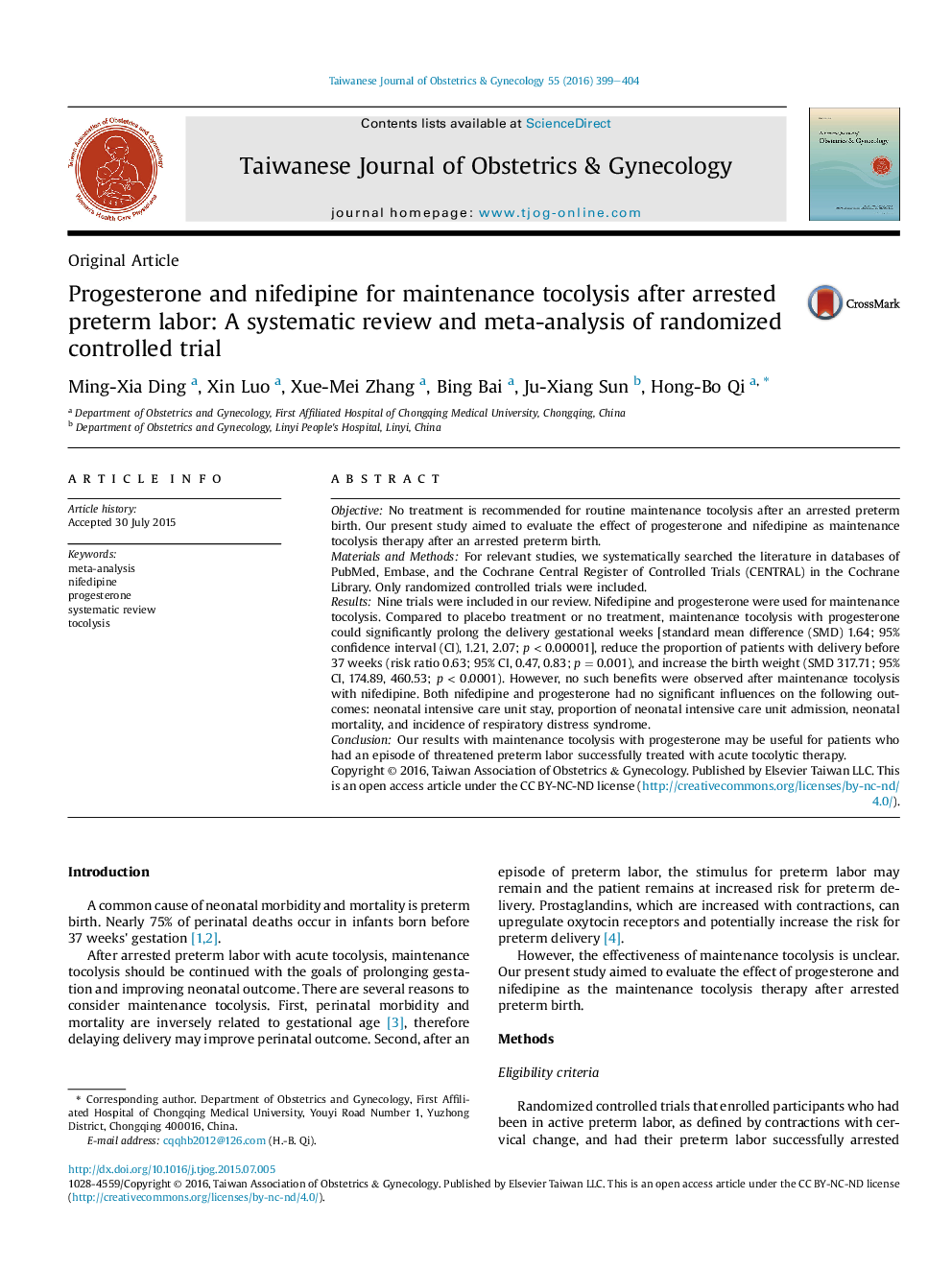| Article ID | Journal | Published Year | Pages | File Type |
|---|---|---|---|---|
| 3975168 | Taiwanese Journal of Obstetrics and Gynecology | 2016 | 6 Pages |
ObjectiveNo treatment is recommended for routine maintenance tocolysis after an arrested preterm birth. Our present study aimed to evaluate the effect of progesterone and nifedipine as maintenance tocolysis therapy after an arrested preterm birth.Materials and MethodsFor relevant studies, we systematically searched the literature in databases of PubMed, Embase, and the Cochrane Central Register of Controlled Trials (CENTRAL) in the Cochrane Library. Only randomized controlled trials were included.ResultsNine trials were included in our review. Nifedipine and progesterone were used for maintenance tocolysis. Compared to placebo treatment or no treatment, maintenance tocolysis with progesterone could significantly prolong the delivery gestational weeks [standard mean difference (SMD) 1.64; 95% confidence interval (CI), 1.21, 2.07; p < 0.00001], reduce the proportion of patients with delivery before 37 weeks (risk ratio 0.63; 95% CI, 0.47, 0.83; p = 0.001), and increase the birth weight (SMD 317.71; 95% CI, 174.89, 460.53; p < 0.0001). However, no such benefits were observed after maintenance tocolysis with nifedipine. Both nifedipine and progesterone had no significant influences on the following outcomes: neonatal intensive care unit stay, proportion of neonatal intensive care unit admission, neonatal mortality, and incidence of respiratory distress syndrome.ConclusionOur results with maintenance tocolysis with progesterone may be useful for patients who had an episode of threatened preterm labor successfully treated with acute tocolytic therapy.
